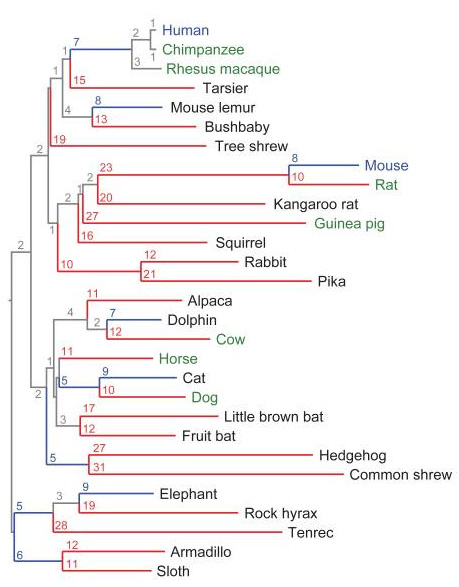Even a cursory examination of the current scientific literature suggests otherwise. You're just in denial.
Let's put this to the test, shall we?
Have you heard of
phylogenetic footprinting? It's an algorithmic technique utilized in genomic comparisons for identifying regulatory regions of genomes for a given species. In a nutshell, it works by identifying conserved regions of genomes of respective organisms with the underlying assumption that regions that are more conserved due to selective pressures are more likely to be important to the organism's function than non-conserved regions. Of course, the actual comparison is far more involved than that, not the least of which owes to relative overall levels of genetic divergence between species.
Now I happen to have a paper handy on an algorithmic approach for this which incorporates phylogenetic trees:
Discovery of Regulatory Elements by a Computational Method for Phylogenetic Footprinting
And just to rehash, a phylogenetic tree is a data set describing the evolutionary relationships of species or higher taxa:
Phylogenetic tree - Wikipedia
For example:
Phylogenetic trees are more than just pretty pictures. They describe a specific data set of relationships between respective species describing both which species/taxa share common ancestry, as well as the relative levels of divergence between each (given via the branch length).
The algorithm in paper linked above incorporates this phylogenetic tree data thusly:
... etc, etc. You can read the paper for all the pertinent details.
My challenge for you is simple: You keep claiming that "common design" can do the same thing evolutionary approaches can accomplish, yes?
Given the above example, please describe how a "common design" approach would be used in an algorithmic approach to perform genomic comparisons and in particular in the context of the above paper and in lieu of using phylogenetic trees.
If you can provide the details of such an approach--keeping in mind this will involve first describing your common design framework, inherent assumptions, and applicability to underlying genomes--then I will be happy to cede the argument that common design can be a viable approach.
On the other hand, if you can't do this, then I think re-reading Romans 1:22 seems appropriate.


 and thts the GOD we are talking of....the creator.
and thts the GOD we are talking of....the creator.
